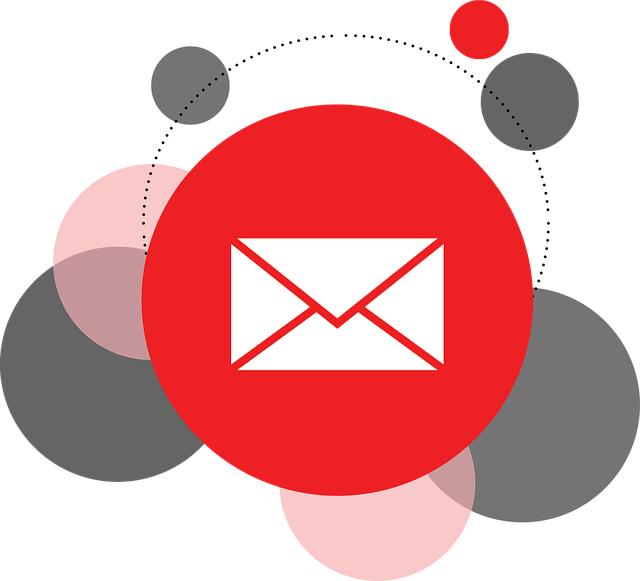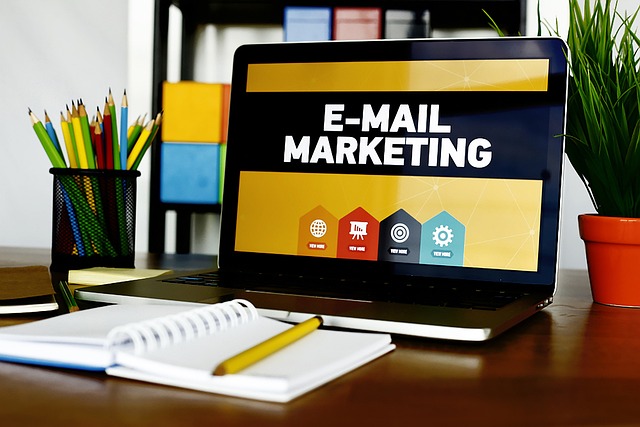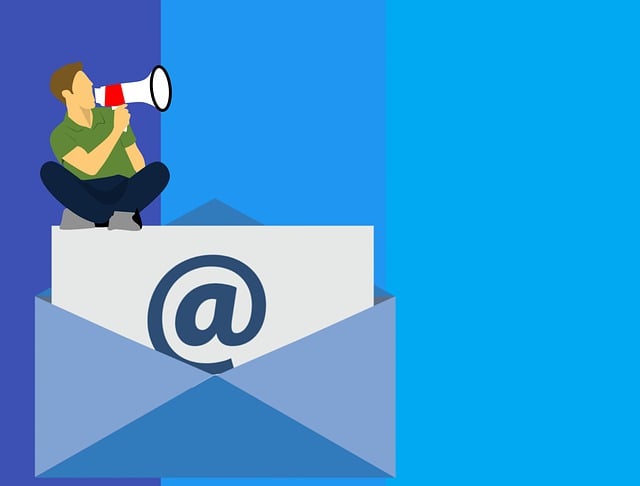Are you tired of feeling like a modern-day Don Draper, blindly sending out email campaigns and hoping for the best? Well, fear not, because in the world of email marketing, metrics are your secret weapon.
Gone are the days of shooting in the dark and hoping for a response. With the power of data-driven insights, you can now maximize engagement with personalized content that speaks directly to your audience’s preferences.
By analyzing metrics such as open rates, click-through rates, and conversion rates, you can uncover valuable information about what resonates with your subscribers. Armed with this knowledge, you can create highly targeted, personalized email content that will captivate your audience and drive them to take action.
But it doesn’t stop there. Through A/B testing and optimization, as well as leveraging automation and dynamic content, you can continuously fine-tune your email campaigns for maximum impact.
So, why settle for mediocre results when you can harness the power of email marketing metrics to achieve extraordinary engagement? It’s time to leave the guesswork behind and start making data-driven decisions that will take your email marketing to new heights.
Key Takeaways
- Email marketing metrics such as open rates, click-through rates, and conversion rates are crucial for optimizing campaigns and maximizing engagement.
- Analyzing open rates helps identify subject lines and content that resonate with the audience.
- Demographic data helps create targeted content and conduct audience analysis.
- Personalized email content improves engagement by speaking directly to the audience’s interests.
Understanding Email Marketing Metrics
Now, let’s dive into the nitty-gritty of email marketing metrics so you can understand exactly how your campaigns are performing and make them even more effective!
Measuring the effectiveness of your email marketing campaigns is crucial for optimizing your strategy and maximizing engagement with your audience. One of the key metrics to monitor is your open rates. This metric indicates the percentage of recipients who actually open your emails. By analyzing open rates, you can identify which subject lines and content resonate the most with your audience, allowing you to craft more compelling and personalized emails.
Improving open rates can significantly enhance the success of your email marketing efforts.
Next, we’ll explore how you can use metrics to identify audience preferences and further boost engagement with personalized content.
Using Metrics to Identify Audience Preferences
In order to effectively tailor your email marketing campaigns to your audience’s preferences, it’s essential to analyze demographic data, track purchase behavior, and monitor engagement levels.
By understanding the demographics of your audience, such as age, gender, and location, you can create targeted content that resonates with them.
Tracking purchase behavior allows you to identify their preferences and offer relevant products or services.
Lastly, monitoring engagement levels, such as open rates and click-through rates, enables you to gauge the effectiveness of your campaigns and make data-driven improvements.
Analyzing Demographic Data
To effectively analyze demographic data, it’s crucial to understand the customer’s background and preferences. This information helps in creating effective segmentation strategies and conducting target audience analysis.
Here are two sub-lists that provide a visual representation of ideas:
Segmentation strategies:
- Demographic segmentation: Dividing the audience based on factors like age, gender, income, and location.
- Psychographic segmentation: Classifying customers based on their personality traits, values, interests, and lifestyle choices.
Target audience analysis:
- Understanding customer needs and preferences: Analyzing demographic data helps in identifying the needs and preferences of different customer segments.
- Tailoring content and offers: By analyzing demographic data, marketers can create personalized content and offers that resonate with specific customer segments.
By analyzing demographic data, you can gain valuable insights into your target audience, allowing you to track purchase behavior and further optimize your email marketing campaigns.
Tracking Purchase Behavior
Keeping tabs on customers’ purchase behavior gives businesses valuable insights into their preferences and helps them tailor their strategies accordingly. By tracking purchase behavior, businesses can gain a deeper understanding of their customers’ buying habits and preferences.
This data can be used to segment customers into different groups based on their purchase history, allowing businesses to create targeted marketing campaigns that are more likely to resonate with each group. Additionally, tracking purchase behavior can help businesses identify patterns and trends, such as which products are most popular or which customers are more likely to convert.
This information can then be used to optimize marketing efforts and improve the overall conversion rate. By monitoring purchase behavior, businesses can make data-driven decisions that result in more effective marketing strategies.
Transitioning into the next section about monitoring engagement levels, it’s important to also track how customers interact with the personalized content that’s being sent to them.
Monitoring Engagement Levels
By closely tracking how customers interact with the tailored material they receive, businesses can gain valuable insights into the effectiveness of their communication strategies. Measuring click-throughs and analyzing open rates are two key metrics that allow businesses to monitor engagement levels.
Click-throughs provide information on the number of recipients who not only opened the email but also took the desired action, such as clicking on a link to visit a webpage or make a purchase.
Analyzing open rates helps businesses understand how successful their subject lines and email content are in capturing recipients’ attention. These metrics enable businesses to identify areas for improvement and refine their email marketing campaigns to maximize engagement.
In the next section, we will explore how businesses can further enhance engagement by creating personalized email content.
Creating Personalized Email Content
Crafting personalized email content is like creating a tailored outfit that perfectly fits the recipient’s preferences and needs. To effectively engage your audience, you need to implement personalization strategies and targeted messaging.
Start by segmenting your email list based on demographics, past purchases, or engagement levels. This allows you to create content that speaks directly to each group’s interests and needs.
Use dynamic content to insert personalized elements like the recipient’s name or recommended products. Additionally, leverage data from previous interactions to deliver relevant content at the right time.
Analyzing open rates, click-through rates, and conversion rates can provide valuable insights into the effectiveness of your personalized emails. By continually refining and optimizing your content based on these metrics, you can maximize engagement and drive better results.
As you move into the next section about a/b testing and optimizing email campaigns, remember that personalization plays a crucial role in creating impactful email experiences.
A/B Testing and Optimizing Email Campaigns
Improve the performance of your email campaigns by experimenting with different approaches and finding the best strategies to captivate your audience.
A/B testing allows you to compare the effectiveness of different elements in your email campaigns, such as subject lines, content, call-to-action buttons, and visuals. By sending two versions of an email to a small sample of your audience and analyzing the results, you can identify which version generates higher open rates, click-through rates, and conversions.
This data-driven approach enables you to optimize your campaigns based on real insights, ensuring that you are delivering the most engaging content to your subscribers. Some effective campaign optimization strategies include testing different email layouts, personalization techniques, and segmentation methods.
By continuously refining and optimizing your campaigns, you can increase engagement and drive better results. Transitioning into the subsequent section about leveraging automation and dynamic content, you can further enhance the effectiveness of your email marketing efforts.
Leveraging Automation and Dynamic Content
Utilizing automation and dynamic content can significantly enhance the effectiveness of your email campaigns. By leveraging automation efficiency, you can streamline your email marketing processes, saving time and resources.
With automated workflows, you can send targeted emails based on specific triggers, such as a customer’s behavior or preferences. This personalized approach increases engagement and conversion rates, leading to better results for your business.
Dynamic segmentation allows you to divide your audience into smaller, more targeted groups based on their demographics, behaviors, or preferences. This enables you to create tailored content that resonates with each segment, increasing the likelihood of a positive response.
Incorporating automation and dynamic content into your email campaigns ensures that your messages are relevant, timely, and engaging. It allows you to deliver the right content to the right people at the right time.
By continuously monitoring and adjusting your campaigns, you can further optimize their performance and achieve even better results.
Continuously Monitoring and Adjusting
Keep a watchful eye on the performance of your email campaigns, making necessary adjustments along the way to ensure your messages hit the bullseye with your target audience. Continuous improvement is key in email marketing, and monitoring your metrics can provide valuable insights to guide your strategy.
By analyzing open rates, click-through rates, and conversion rates, you can identify areas for improvement and make data-driven decisions. Customer segmentation is another crucial aspect to consider. By segmenting your audience based on factors like demographics, interests, and past behavior, you can personalize your content and increase engagement.
Continuously monitoring and adjusting your email campaigns based on these metrics and customer segmentation will help you optimize your results and create a more tailored and effective email marketing strategy.
Frequently Asked Questions
How can I measure the success of my email marketing campaign?
To measure the success of your email marketing campaign, you need to focus on measuring campaign performance and tracking email metrics. By analyzing key metrics such as open rates, click-through rates, conversion rates, and unsubscribe rates, you can gain valuable insights into how well your campaign is performing. These metrics provide data-driven evidence of your campaign’s effectiveness, allowing you to make informed decisions and optimize your email marketing strategy for maximum engagement and results.
What are some strategies for creating personalized email content that resonates with my audience?
To create personalized email content that resonates with your audience, implement effective personalization techniques and targeted segmentation.
By analyzing data on your audience’s preferences, behaviors, and demographics, you can tailor your content to meet their specific needs and interests. This approach increases engagement and drives conversions.
Utilize dynamic content and automation to deliver highly relevant messages.
Implement A/B testing to experiment with different strategies and optimize your email campaigns for maximum impact.
How can A/B testing help improve the effectiveness of my email campaigns?
A/B testing is a powerful technique that can significantly improve the effectiveness of your email campaigns. By testing different variations of your emails on a small sample of your audience, you can gather valuable data and insights to optimize your content.
A/B testing benefits include identifying the most engaging subject lines, call-to-actions, and design elements. This data-driven approach allows you to make informed decisions and create emails that resonate with your audience, leading to higher engagement and conversion rates.
What are some best practices for leveraging automation and dynamic content in email marketing?
To maximize your email marketing effectiveness, it’s important to leverage personalization tools and integrate CRM data. By doing so, you can create automated email campaigns that deliver dynamic content tailored to each recipient’s preferences and behaviors. This approach increases engagement and drives conversions by delivering relevant and timely messages.
Leveraging personalization tools and integrating CRM data allows you to segment your audience, send targeted emails, and track customer interactions. These data-driven strategies will help you optimize your email marketing campaigns and achieve better results.
How often should I monitor and adjust my email marketing strategies to ensure maximum engagement?
To ensure maximum engagement, it’s crucial to monitor and adjust your email marketing strategies regularly. By actively monitoring metrics such as open rates, click-through rates, and conversion rates, you can identify trends and make data-driven decisions. Adjusting your strategies based on these insights allows you to optimize your content, timing, and segmentation.
The frequency of monitoring depends on your specific goals, but a good practice is to review your metrics at least weekly or monthly to stay ahead of any potential issues and continuously improve your email marketing performance.
Conclusion
Congratulations! You’ve just unlocked the secret to email marketing success. By harnessing the power of metrics, you can skyrocket your engagement rates and leave your competitors in the dust.
With personalized content that caters to your audience’s preferences, you’ll have them hooked from the first click.
Don’t stop there, though. A/B testing and optimization will ensure your campaigns are always on point.
And with automation and dynamic content, you’ll have your email game running like a well-oiled machine.
So keep monitoring, keep adjusting, and watch your email marketing soar to new heights. The time for data-driven persuasion is now!









